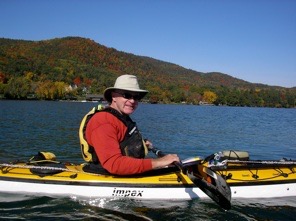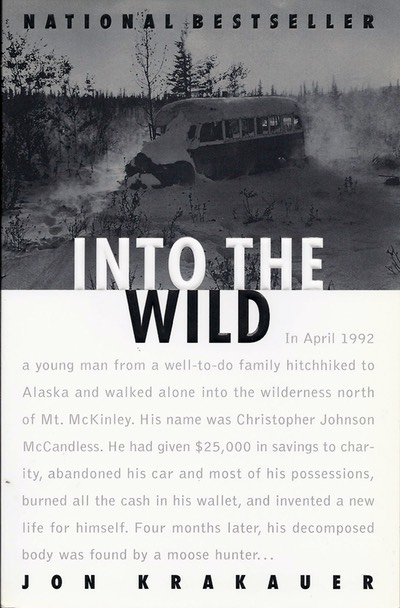
Books Reviewed: Killing Mister Watson and Shadow Country
Author: Peter Matthiessen
Publisher: Vintage International (Watson), The Modern Library, New York (Shadow Country) both Kindle eBooks
Copyright: The paper version of the Watson Trilogy seems to have been published in 1990 (Killing Mister Watson, ISBN 0-679-73405-8). I cannot find a paper version of Shadow Country and no copyright date or ISBN number are listed in the eBook, only a reference to 2008.
Type: eBook, Kindle version
Reviewed by: Yackman

Yackman’s Rating: 10 points out of 10

I slept like a baby. The Watson Place was quiet, even serene. At night I could hear mullet leaping free of the water and falling back with a soft splash, which is their habit. And the soft blow of dolphins exhaling as they surfaced to breathe could be heard through out the night. It is easy to see why Ed Watson loved this place on the Big Bend in the Chatham River, and made it his home for more than twenty years.

Bruce, relaxing at the Watson Place at the Big Bend on the Chatham River.
But the Watson Place has a dark side as well, a very dark side. In 1910, eight people were murdered here. And over the years, five others turned up dead or missing. I didn’t know that as I lay peacefully sleeping on that killing field. As a result of these killings, Ed Watson’s neighbors on Chocoloskee Island tried to arrest him. When he would not surrender to be taken in for questioning, they killed him. Murdered him some said.
The killing of Edgar J. Watson is both the beginning and the end of this story. Peter Matthiessen, the author, seems to have been obsessed with Watson and the characters that surrounded him. Matthiessen wrote a 1500 page book on the subject that no publisher would print. It was too long. So Matthiessen broke it into three books, Killing Mister Watson, Lost Man’s River and Bone by Bone. Ten years after publishing these three stories, he edited the original book down to just under 900 pages and published it as Shadow Country. I started by reading Killing Mister Watson and continued by reading Shadow Country.
I first learned about Watson when I visited Ted Smallwood’s Store on Chocoloskee Island on the last day of our 2014 Everglades paddling adventure (click here to see that trip report). I saw Matthiessen’s Killing Mister Watson on display there. (As it turns out, Smallwood and Watson were friends, and Watson was gunned down just outside the store.) I didn’t buy the book then, but ordered the Kindle version from Amazon as soon as I got home. God, what a story! I couldn’t put it down.

Smallwood's Store
I could easily visualize the people and places described in the book because I had met people very much like them in rural Florida. I had visited many of the places mentioned in the tale and paddled many of the passes and bays described in the book. I had slept on Pavilion Key. I had visited the Lopez sites on the Lopez River and Panther Key.

Rabbit Key
I had picnicked on Rabbit Key, and paddled Rabbit Key Pass. I didn’t know at the time that Watson’s lifeless, bullet riddled body was hog tied and dragged behind a boat through Rabbit Key Pass to its initial resting place on Rabbit Key.
All three books describe the actions from the speaker’s point of view. The first book, Killing Mister Watson, starts with Watson’s murder at Smallwood’s Store in October, 1910. It then tells the story of how this event came to be in the words of all the characters who had anything to do with Watson over the preceding twenty years, exploring their opinions about Watson and their various parts in his demise.
The second book, Lost Man’s River, is written from the point of view of Watson’s youngest son by his second wife Edna. His name was Lucius Watson. Lucius earned a Ph.D. in History and became a noted historian. It became his life’s work to discover the truth about his father. He hoped to reestablish his father’s reputation as an honest, hardworking, farsighted farmer. When he discovered the awful truth that his father was indeed a murder, a multiple murder and worse, he burned his notes and the book ends.
The final book, Bone by Bone, is told from Watson’s point of view. We learn that Edgar Artemis Watson, in an effort to escape the law changed his identity to Edgar Jack Watson. Jack was Edgar’s alter ego, his dark side, the angry, out of control, violent side that would erupt without warning and over whom Edgar had limited control. Jack tended to appear when Edgar was heavy into drink, when he could easily take offense at intended or unintended slights. The book starts with Edgar’s violent upbringing by a drunken, abusive father and a mother who delighted in taunting and berating her useless husband about his inabilities as a man and breadwinner, until he would explode and, instead of beating her, would beat Edgar. His mother would never defend him.
After one of these beatings Edgar was unconscious for three days. The author speculates that “Jack” began to appear after this incident. At age fifteen as his father began to beat him once more, Jack picked up a two-by-four and beat the old man till he was nearly dead. Then he left home for good.
This story ends where the first book begins; with Watson’s death at the hands of twenty of his neighbors, outside of Smallwood’s store in the dusk of a cold and stormy October evening.
I liked these two books for so many reasons. In many ways they are a period piece, set in the late nineteenth and early twentieth centuries following the end of Reconstruction. During Reconstruction, Federal troops were sent to occupy the south after the Civil War. (The next time troops were sent to the south on a civil rights matter was in the late 1950’s when President Eisenhower sent troops in to force school integration following Brown vs. The Board of Education.) The troops were pulled out following Reconstruction, leaving the freed slaves to fend for themselves in a culture that valued their lives little. So many vignettes in the book illustrate how desperate life was for negroes, Native Americans and “half-breeds”.
The story of the lynching of a freed slave was particularly disturbing to me in its vivid illustration of how little the life of a former slave meant. A proud black man who would not bow and scrape to the white folk around him was arrested for violating no particular law. During Reconstruction he wouldn’t have been touched. But the troops who might have protected him were gone. The town’s people believed he needed to be hung as a message to other blacks who might not know their place.
He was marched out to a hanging tree in the town square where the townsfolk, men, women and children had gathered to picnic and watch this man die. First, falsely accused of rape, he was stripped and castrated to the cheers of the crowd. Then he was hanged, but only till he passed out. When he revived, they did it again, over and over. When they tired of this, they hung him up with his toes barely touching the ground so that he was dancing to catch his breath (just like the scene in Twelve Years a Slave). All the while, children were running up to poke him with sharp sticks and knives. It took the man hours to die, which ended the festivities. I still shudder when I reflect on the inhumanity of it.
Incidents like this were not the main story. They, along with many other stories, were vignettes that helped place the bigger story in some kind of historical context. This was also true of the speech of the poor, uneducated characters of all colors who speak in the book. Matthiessen’ s is a master at reproducing this colorful dialect. I found myself smiling over and over at the expressions and manner of speaking used by these folks. Here are some examples.
- “Used to call this God’s country, and we still do, cause nobody but God would want no part of it.”
- “Swamp angles finally got the best of us, ol’ Winky said - that was Old Man McKinney’s name for the damn skeeters.”
- “That’s the way our daddy was. Never got angry, but when he dropped something, he was finished with it, like he’d took a crap. Life was too short to waste time looking back, is what he said.”
- “Roasted possum tasted almost like young pig if you tasted hard enough.”
Matthiessen’ s descriptive language is beautiful.
- “Cloud reflections sailed beneath the surface of the sea like sunken snowy mountains.”
- “Out beyond all my anger and suspicion, wild space opened where my mind would go careening and beyond all that lay that eternal desolation like the moon’s eclipse.”
- In Henry Short, the brother and his keeper were the same and Judgement Day was every day all year. He figured he deserved his cross and he aimed to tote it.”
- This southwest coast, called the Ten Thousand Islands, was like a giant jigsaw puzzle pulled apart, the pieces separated by wild rivers, lonesome bays, and estuaries where lost creeks and alligator sloughs, tobacco-colored from the tannin, continued westward through the mangrove islands to the Gulf as brackish tidal rivers swollen with rain and mud, carving broad channels.”
- “A jay’s blue fire crossed the sun from one wall of spring leaves into another. In the stillness, a stray thrush song came in wistful query from the wood. He turned to listen. Nothing. Only the fall of a lone acorn, a small point of sound on the surface of the silence, a point of emptiness in the great roar of the turning Earth.”
And then there are some things that seem as true today as they did then. This is Ed Watson speaking about some of the business men he knew who were making exorbitant profits off of the government selling meat to the Army during the Spanish American War.
- “You had to wonder at the greed that drove rich businessmen to twist the law of the land they seemed to be so proud of, steal from the government by overcharging for their “patriotic” services, and do their best to cheat it of its taxes - not to make a living either, but to heap up money.”
These books are so rich with the history of late nineteenth and early twentieth century Florida that they are a must read for anyone interested in understanding backwoods Florida at that time. This is especially true for those who have visited Everglades City, Chocoloskee Island, or Everglades National Park. Those of us who have fished and paddled the area will recognize Lost Man’s River, Half-way Creek, Pavilion Key and dozens of other references in these books.
If you don’t mind a long read, get Shadow Country. Actually, each chapter represents one of the original books, so you could read any one of them and stop. And Shadow Country with all three stories costs no more as a Kindle book than buying Killing Mister Watson alone. But like me, you may find them so engaging that you won’t be able to stop. Great books, great stories, great writing, I recommend them.
Yackman


